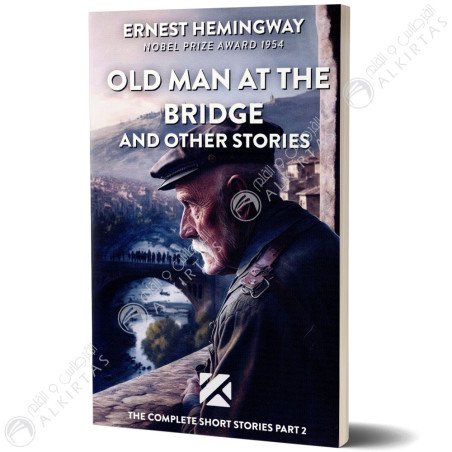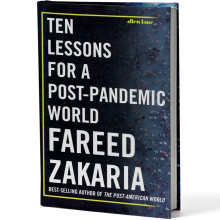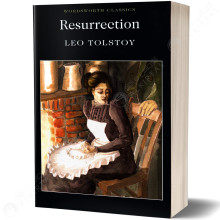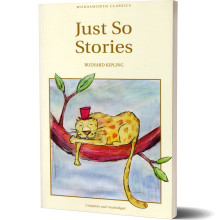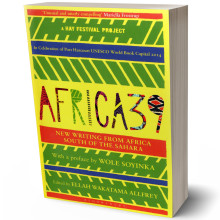Serie: The Complete Short Stories Part 2
‘Old Man at the Bridge’ is one of Ernest Hemingway’s shortest stories: short enough to be considered as perhaps more of a ‘vignette’ than a ‘story’ as such. Set during the Spanish Civil War in the 1930s, ‘Old Man at the Bridge’ is about an encounter between the story’s narrator and an old man in his seventies who was the last person to leave his town behind during the war.
About the Book
LITERATURE
‘Old Man at the Bridge’: plot summary
The story consists of just one brief scene – the conversation between the narrator and the ‘old man at the bridge’ – and one setting: the pontoon bridge across a river in Spain.
The narrator, who has been sent on a mission to cross the bridge and explore the land beyond to see how far the enemy have advanced, meets an old man who is seventy-six years old. The old man has left his hometown of San Carlos, where he took care of animals. He tells the narrator that he was the last person to leave the town.
The old man does not look like a shepherd or a herdsman, but he returns several times to his favourite topic: the fact that he looked after the animals in the town. He tells the narrator there were two goats and a cat, plus four pairs of pigeons. But he was told he had to leave the town, and the animals, because of the artillery.
The narrator warns the man not to hang around but to hitch a ride on one of the trucks heading for Barcelona. The old man thanks him but it’s not clear whether he intends to follow this suggestion. He keeps returning to the question of whether the animals will be all right without him. He knows the cat will be able to survive on its own but he worries about the others.
The story ends with the narrator telling us that the Fascist army was advancing towards the Ebro river and the old man wouldn’t have long to get away. But the old man seems reluctant to move.
‘Old Man at the Bridge’: analysis
In 1937, Hemingway went to Spain to cover the Spanish Civil War for the North American Newspaper Alliance (NANA). In July of that year, he attended the Second International Writers’ Congress, at which a number of writers discussed their attitudes towards the civil war. He left Spain for Florida but returned in 1938, and was present at the Battle of the Ebro, the last republican stand. Indeed, Hemingway was among the British and American journalists who among the last people to leave the battle as they crossed the river. This context is obviously relevant to ‘Old Man at the Bridge’.
‘Old Man at the Bridge’ is not really a war story in the traditional sense, although the Spanish Civil War is obviously integral to the story and more than mere backdrop. But rather than focusing on the conflict itself, Hemingway turns his, and his reader’s, attention to a man who is too old to fight, and who is nearing the end of his life. Rather than thinking about the human cost of war, the old man is only really concerned with what will happen to the animals he has had to leave behind in San Carlos.
What is more, even his own life seems worthless to him, and there is a strong suggestion that he is happy to remain at the bridge until the enemy turn up and he is killed or taken prisoner. Hemingway is at pains to contrast the simple life led by the man, who clearly derived so much pleasure from tending to a few animals, with the political complexities of war on a national scale.
Indeed, he makes a point of telling us the old man was not political: he neither supports nor opposes the Fascists who are coming for him.
There is also the physical fact of the old man being in his seventies, and too ‘tired’ even to carry on walking. We are so used to considering war from the perspective of the combatants that we forget how strange an experience war must be for those too old and infirm to fight or even move on to a place of relative safety.
But there’s more than this: we get the impression the old man at the bridge doesn’t want to move on. He won’t know anyone in Barcelona, as he tells the narrator. But such a journey will also take him further away from his animals. It is psychological or emotional attachment to his native town and the animals he tended which keeps him there at the bridge – symbolically, a boundary or crossroads between two places – as much as physical immobility per se.
Hemingway lets the symbolism of ‘Old Man at the Bridge’ go to work subtly on the reader. Note how the four pairs of pigeons the old man looked after become ‘doves’ at the end of the story. Technically, pigeons are doves – the two birds are related – but ‘doves’ obviously imparts symbolism associated with peace, in stark contrast to the civil war raging around both the old man and the narrator. It’s a natural but marked shift in language which is the equivalent of Hemingway turning up the volume dial very gently, to bring the latent imagery of the story more fully into the open.
About the Author
Ernest Hemingway
Ernest Miller Hemingway was an American author and journalist. His economical and understated style had a strong influence on 20th-century fiction, while his life of adventure and his public image influenced later generations. Hemingway produced most of his work between the mid-1920s and the mid-1950s, and won the Nobel Prize in Literature in 1954. He published seven novels, six short story collections and two non-fiction works. Three novels, four collections of short stories and three non-fiction works were published posthumously. Many of these are considered classics of American literature.
Hemingway was raised in Oak Park, Illinois, and after high school he reported for a few months for The Kansas City Star, before leaving for the Italian front to enlist with the World War I ambulance drivers. In 1918, he was seriously wounded and returned home. His wartime experiences formed the basis for his novel A Farewell to Arms. In 1922, he married Hadley Richardson, the first of his four wives. The couple moved to Paris, where he worked as a foreign correspondent, and fell under the influence of the modernist writers and artists of the 1920s "Lost Generation" expatriate community. The Sun Also Rises, Hemingway's first novel, was published in 1926.
After his 1927 divorce from Hadley Richardson, Hemingway married Pauline Pfeiffer. They divorced after he returned from Spanish Civil War where he had acted as a journalist, and after which he wrote For Whom the Bell Tolls. Martha Gellhorn became his third wife in 1940. They separated when he met Mary Welsh in London during World War II; during which he was present at the Normandy Landings and liberation of Paris.
Shortly after the publication of The Old Man and the Sea in 1952, Hemingway went on safari to Africa, where he was almost killed in two plane crashes that left him in pain and ill-health for much of the rest of his life. Hemingway had permanent residences in Key West, Florida, and Cuba during the 1930s and 1940s, but in 1959 he moved from Cuba to Ketchum, Idaho, where he committed suicide in the summer of 1961.
- Langue
- Anglaise
- Dimensions
- 120 mm x 200 mm
- Edition
- KITEBCOM Publishing & Distribution
- Collection
- Novel
- Auteur
- Ernest Hemingway
- Poids
- 87 pages
- Nombre de pages
- 95 pages
- Date de Parution
- 2023
- Série
- The Complete Short Stories

